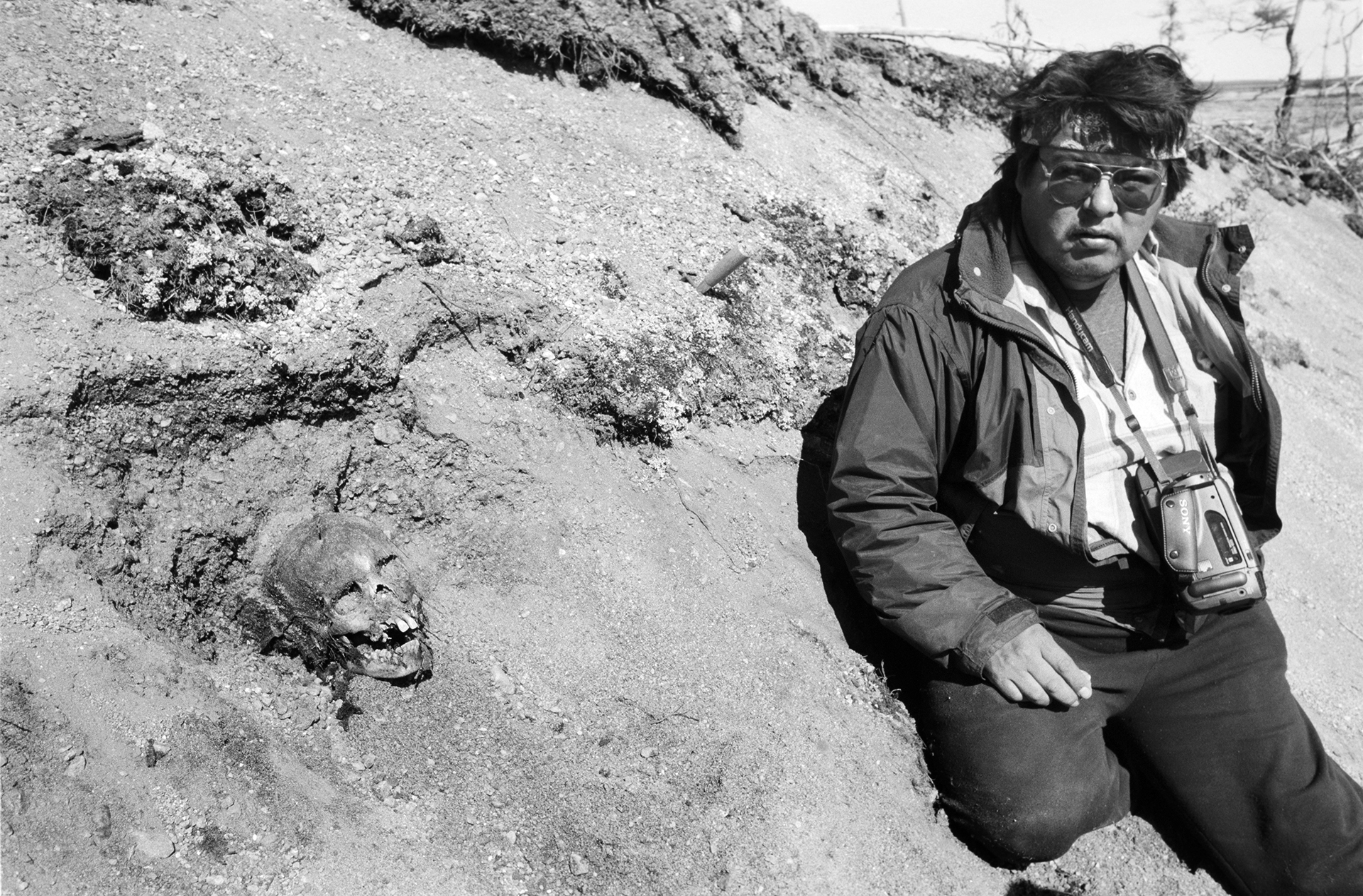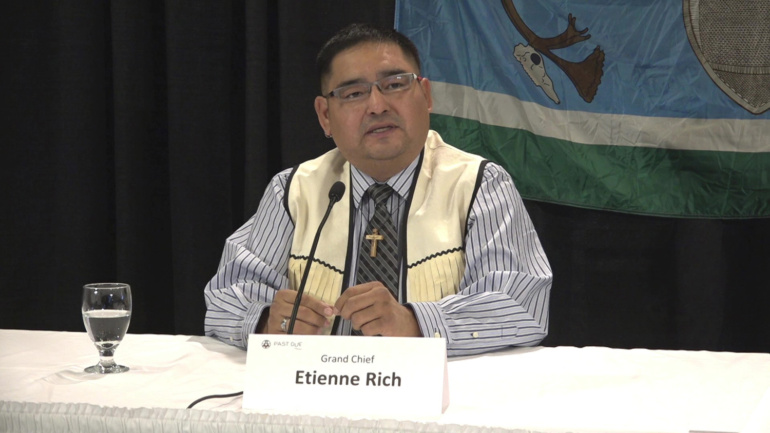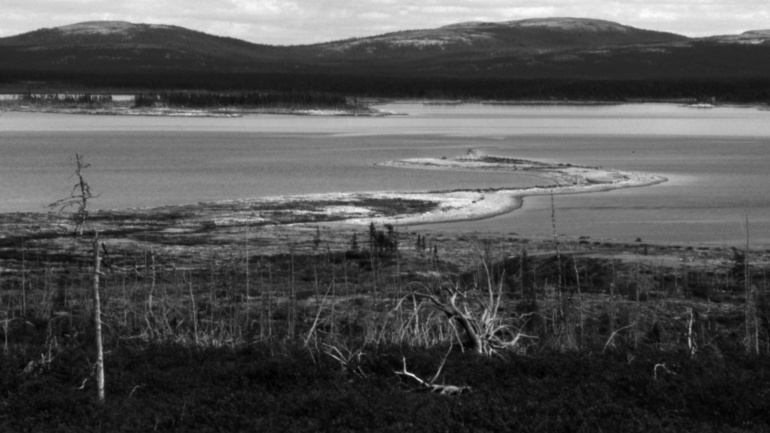Our hunting territory is no good to us anymore, because all our traps and belongings are under water. We lost mostly Indian-made items. I lost two canoes, about 300 traps, snowshoes, caribou-hide scrapers, beaming tools, ice chisels, axes, and many other items. We knew that there was going to be damming of the (Churchill) river, but we did not know what it would mean. We had no idea of what the level of the water would be. At most, we compared it to a beaver damming a river — Indians were not consulted at all of what was going to happen. I was very bitter after I found out that the lands were flooded. There wasn’t much that could be done.
PENOTE ASHINI, 1981
I guess the government dammed the great river because money could be made selling power and jobs were created. But governments don’t live off the land, so they are not hurt. On the other hand, we have been deeply hurt to see our land destroyed, land which has sustained us for thousands of years. The government acted like they were the owners of the land. This is Innu land. They are stealing land that belongs to the Innu.
ELIZABETH PENASHUE (TSHAUKUESH), 1991
But before it was disturbed, before Meshikamau was flooded, trout used to be everywhere, right, in the brooks. I saw Innu at Kanekuanekat, and the lake was not disturbed yet, who caught very huge trout there. And now there’s no knowledge that any trout is there. And the fish is not good at all, right. It does not taste like anything, the fish. The water is doing that to it. It does not even taste like fish. It does not taste like anything. That’s because the water is bad. The water is dead.
PIEN GREGOIRE (JR), 1993
“In 1975 without any warning to Innu families, the Churchill Falls Hydro-electric project flooded much of the Lake Michikamau region, drowning major Innu travel routes, open-water camp-sites and burial grounds as well as important caribou travel routes and waterfowl nesting areas. The Lake Michikamau region had long been an important rendezvous place where Innu families gathered to renew social and spiritual bonds. Without warning Innu families lost cached equipment and access to a place that had great significance for Innu families. I often heard Innu elders speak with great sadness about the loss of the Michikamau camps and wondered how much of Innu history lay buried beneath the Smallwood reservoir waters. My own grandfather lost his canoes, his tent, and all his trapping equipment and he spoke sadly of the old burial places that he knew were now under water.
In 1995, following several years of low snow accumulation, the water-levels at the reservoir had been drawn down to the old lake level once again exposing the shorelines and the old Innu camping places. I was curious if any traces of the old places survived. Accompanied by my uncle, I had the opportunity to lead a team of archaeologists to see if any traces of Innu history could be found. In no time at all we found traces of many Innu camps from the historic period as well as several that included stone tools left by Innu hunters and their families many hundreds if not thousands of years ago. At one place on a knoll over-looking the lake, that had long been an old Innu burial place, we found where the reservoir waters had destroyed the ancient resting place, where a burial of a young Innu had been eroded away. Gathering the bone fragments and the skull we reburied them back in the forest safe from the erosion caused by the reservoir’s high waters.”
DANIEL ASHINI, FORMER GRAND CHIEF OF INNU NATION, 2007




